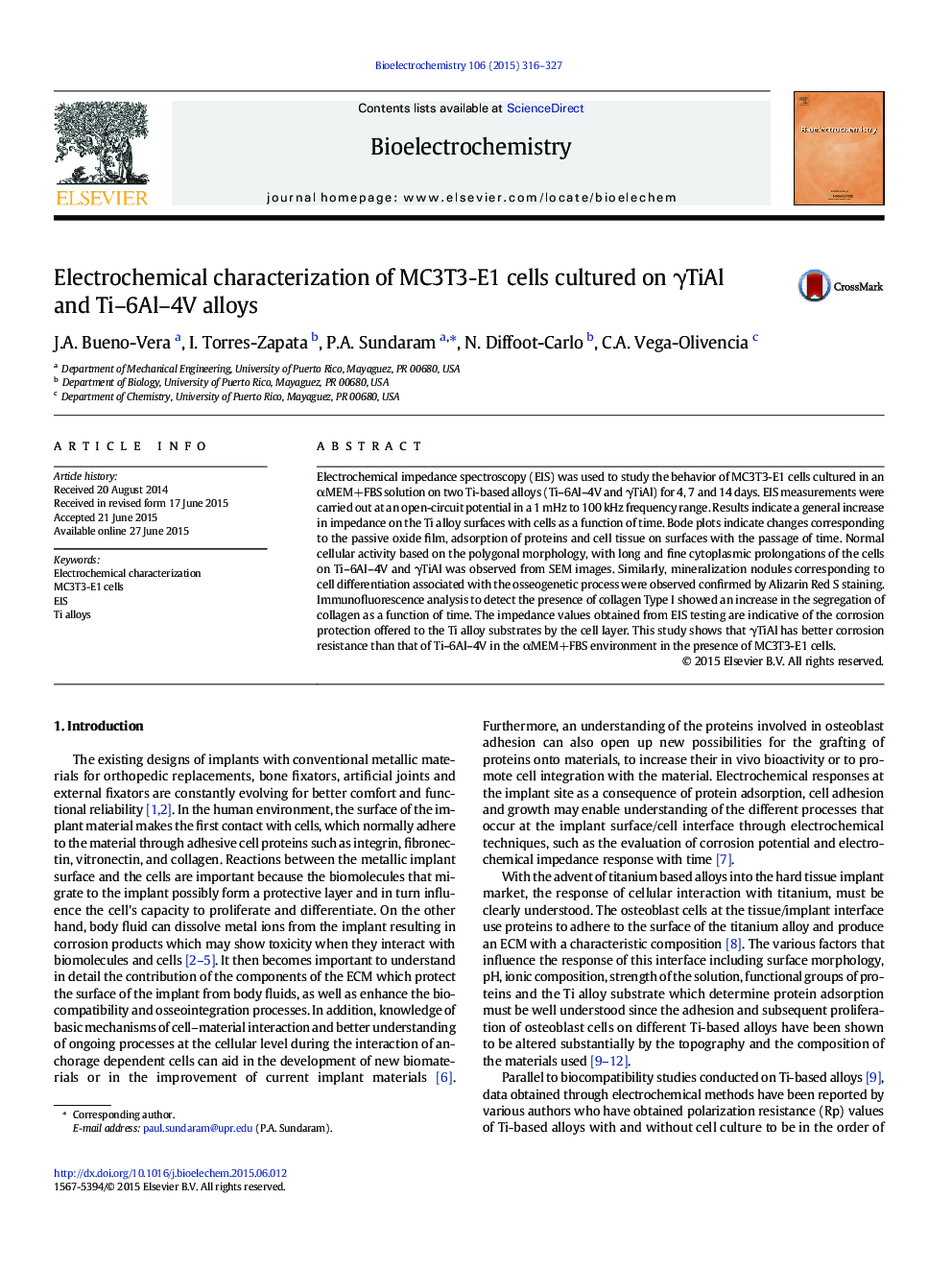| Article ID | Journal | Published Year | Pages | File Type |
|---|---|---|---|---|
| 1270741 | Bioelectrochemistry | 2015 | 12 Pages |
•Ti–6Al–4V and γTiAl alloy surfaces are cytocompatible for MC3T3-E1 cells.•Collagen Type I expression increases on Ti alloy surfaces with incubation time.•Proteins and cells increase the resistance polarization of Ti alloy surfaces.•γTiAl alloy surface is better protected by cell layer compared to Ti–6Al–4V in SBF.
Electrochemical impedance spectroscopy (EIS) was used to study the behavior of MC3T3-E1 cells cultured in an αMEM+FBS solution on two Ti-based alloys (Ti–6Al–4V and γTiAl) for 4, 7 and 14 days. EIS measurements were carried out at an open-circuit potential in a 1 mHz to 100 kHz frequency range. Results indicate a general increase in impedance on the Ti alloy surfaces with cells as a function of time. Bode plots indicate changes corresponding to the passive oxide film, adsorption of proteins and cell tissue on surfaces with the passage of time. Normal cellular activity based on the polygonal morphology, with long and fine cytoplasmic prolongations of the cells on Ti–6Al–4V and γTiAl was observed from SEM images. Similarly, mineralization nodules corresponding to cell differentiation associated with the osseogenetic process were observed confirmed by Alizarin Red S staining. Immunofluorescence analysis to detect the presence of collagen Type I showed an increase in the segregation of collagen as a function of time. The impedance values obtained from EIS testing are indicative of the corrosion protection offered to the Ti alloy substrates by the cell layer. This study shows that γTiAl has better corrosion resistance than that of Ti–6Al–4V in the αMEM+FBS environment in the presence of MC3T3-E1 cells.
